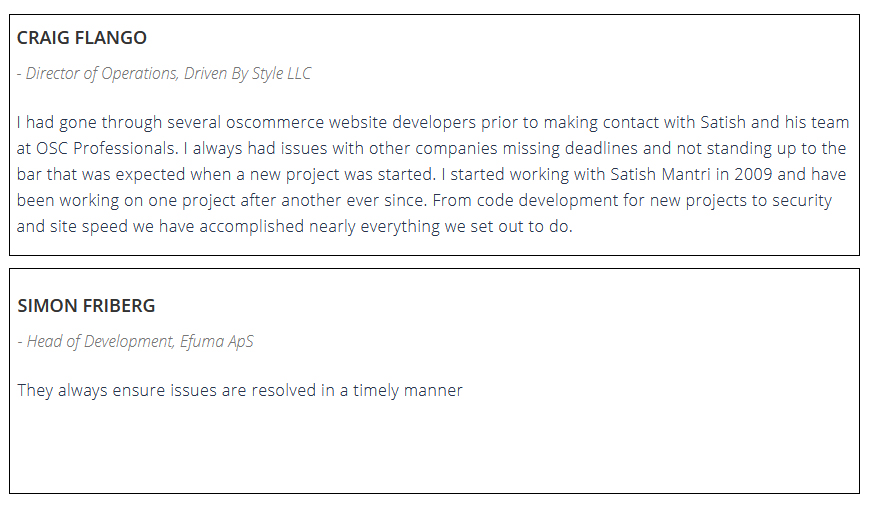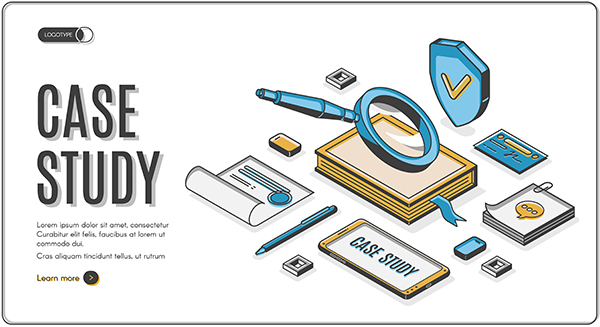Table Of Content
- QuickRead
- Validate Future Buyer
- Customer Testimonials
- Testimonial Research
- Gather Customer Testimonials
- Automatic Emails
- Customer Satisfaction
- Apps to Gather Feedback
- positive testimonials
- Best Customers
- Use Social Media
- Net Promoter Score survey
- What to ask in testimonials
- Testimonials Spotlight
- Product-specific Testimonials
- Testimonial Page
- Depth Case Studies
- Outsource/automate testimonial Collection
- Pros
- Cons
- Testimonials
Testimonials’ Persuasive Strength (and How to Exploit Them for Your Business)
Aug 13, 2020 | 10 min read
1. QuickRead
The e-commerce world changes and evolves rapidly. In recent years one of the main developments has been the explosion of online reviews.
Reviews have already exploded across the world and, they pop-up irrespective of whether you are consciously promoting them or not.
If used creatively, however, reviews can become important bits of psychological data that convince people to buy.
In this article, we will look at how reviews can be put to use in your business. We’ll teach you precisely how to start generating (and automating) them, and how to handle them.
Let’s get started.
2. Using current customers to validate future buyers
Before we delve into the ‘how,’ let’s think about the ‘why’ of consumer testimonials and create a foundation for understanding their importance.
How customer testimonials function
Testimonials are convincing as they are a strong type of social proof: a psychological phenomenon centered around the premise that we are more inclined to follow other people’s acts before us as we feel they represent the right conduct.
Social evidence allows you to leverage your current buyers to sell to prospective clients.
Think about it like this: once you see that certain face cream is recommended by your beloved beauty icon, you can trust the endorsement, right? You might also order it. The testimonial validates the product to you immediately.
The same thing happens, even though the person offering the recognition is not identified. Testimonials are actual, accurate product input pieces that affect purchasing decisions.
Testimonial Research: Evidence that they are working
There have been quite a few studies that dig at testimonial usefulness in addition to ROI. The findings show that they really do have a large effect on conversions and sales.
The figures are not lying:
- Econsultancy data reveals that testimonial sites are seeing an 18 percent growth in revenue, while at the same time increasing the probability of purchasing for 63 percent of site users.
- As WikiJob checked a web page with testimonials vs. one without, 34 percent more clicks were received by the edition with them.
- Reevoo research reveals that 50 or more ratings per product will increase conversion rates by 4.6 percent
- Brightlocal reported that 88 percent of users value other customers’ written web feedback almost as much as they value personal contact suggestions.
What we should take from this is a clear conclusion: for e-commerce businesses, testimonials are important.
3. How to gather customer testimonials: the logistics
Now that we appreciate a testimonial ‘s worth let’s think about how you can begin gathering your own.
Step one is simple: Asking must be done.
Evidence reveals that when you call for testimonial consumers are willing to oblige much of the time. In reality, a Brightlocal survey showed that when questioned, 68 percent of customer respondents would leave a review for a company.
So, how are you going to ask for testimonials?
Using an automatic email that will be received 5-7 days after delivery
Review compilation doesn’t have to be a time-consuming, manual operation. You will reach out to each and every customer to ask them to leave a comment if they are pleased with the order with the aid of an automatic email that is prompted to send 5-7 days after delivery. (Note: You would need to combine Shopify with your ESP or use an app to set up and automate emails caused by behavior.)
You may provide a minor discount from their next order with you to inspire action, join them in a contest for a reward, or even simply give them a shout on their social media pages to thank them.
Submit a question on customer satisfaction
Consumer feedback surveys are another simple way to collect testimonials and valuable consumer knowledge, and thanks again to email automation, you can do it easily. Through incorporating a platform such as SurveyMonkey, you can quickly follow up with post-purchase consumers to gather reviews.
Feature questions to the survey such as:
- What questions did you have before the transaction finished?
- What questions did you have before buying?
- Why did [blank] buy?
- Will you need [blank] for what?
You will collect social evidence all while learning how to develop the consumer service as a whole by even having an open-ended query that encourages participants to write in a testimonial (or express general thoughts)
Use apps to gather feedback
When you’re looking for a way to incorporate a tool that helps simplify the set of testimonials, find a few applications that work with Shopify, like:
- Yotpo
- Stamped.io
- Shopify Product Reviews
- Loox
Both of these work smoothly with your Shopify app and will help you collect feedback and testimonials from your customers quickly.
4. Who to ask for positive testimonials
Testimonials of good quality don’t come from just anybody. They usually come from a very small slice of your client base. Here’s how the special category can be identified.
Start with your best customers
It only makes sense to kick it off with your closest clients — after all, they ‘re your biggest supporters already. When you’re not sure how to reach them, try arranging clients on the basis of factors like:
- Amount of sales: Search for customers who have made regular sales from your shop
- Maximum spent: Check at the clients you charge the most
- Customer relationship duration: Search for consumers who have long-term relationships with you
Essentially this is the group of VIP clients. You know they love you, so seek them out and ask for testimonials that justify why they have been your brand’s such major supporters.
Reach out on social media to customers who’ve posted praise
Happy customers who have shared praise on social media about your product are already acting for you as brand evangelists, so you should also focus on these organic testimonials on your social channels.
Blankie Tails does that well by showcasing supportive testimonials like Email, Facebook, and Instagram on their social channels:
You should go a step forward with those actions as well. Consider asking these happy customers for a more detailed testimonial that can live permanently on the homepage (without losing them to social media’s fast-paced timeline).
Connect with “promoters” from a Net Promoter Score survey
Net Promoter Score surveys help retailers gauge customer satisfaction and loyalty by asking clients the following question:
“How possible is it that you would recommend a friend or colleague for our company/product/service?”
Respondents can respond using a 1 to 10 rating scale, with 1 being highly unlikely and 10 being highly probable.
You will then hit your “Promoters” (who replied with 9 or 10) with these data and ask them to write a testimonial that reiterates the good feelings.
Okay, how can you do this? By incorporating a platform such as SurveyMonkey or Consumer.guru, you can gather Net Promoter Score responses by email (and you can also insert positive customer testimonials directly into your site).
5. What to ask in testimonials to create social evidence?
Now that you know where the ‘how’ and ‘why’ sections of the series of testimonies, let’s get to the ‘what’.
Having general testimonials isn’t enough — you want good, persuasive testimonials that produce results for your business. Evidently, research shows that customers are spending 31 percent more on companies with good customer testimonials.
And what’s going to render a home-run testimony?
Specificity in large sections.
When it comes to social evidence generalizations are not very accurate. Instead, you want highly concise tips and encouragement that focus on some of the pressure points and challenges your target audience encounter in order to attract them to make purchases.
You can motivate the testimonials to be more detailed through:
- Reminding them exactly what they bought from you. Hold the idea new in the hands of the customer.
- Asking questions use words/language in the testimonial you want to replicate back. Including any keywords and phrases used by the clients when thinking about the drug.
- Display them what other pleased clients say about the product(s) they purchased. Through presenting certain concrete cases, help encourages higher-performing testimonials.
- In a testimonial, you set out what you’re looking for. Want short-form soundbites? A few phrases? Stories? narratives? Be precise as to what format-wise you like.
- Asking for supplies to help. According to research on the idea of ‘truthiness,’ including a picture of the individual giving the testimonial boosts confidence, whereas media such as product photos/videos are valuable user-generated content that can enhance testimonials
- Ask them to answer growing concerns about customers (reverse testimonies). Using questions such as, “What were your purchasing problems (and how did you get over them?)”
Learn from the best
FloriVera, a skincare company, is a service that obtains extremely detailed testimonials from satisfied customers. Look at this one customer left testimonial about their firming face oil:
6. Where to spotlight testimonials
After you have been collecting testimonials, there are a few different areas that you can show to ensure you exploit them to their fullest capacity.
Product pages (for product-specific testimonials)
Testimonials, scores, and recommendations are important to highlight on product pages, as they provide an outlet for shopping shoppers to read real feedback from past customers. Bensly features a drop-down option on every product page, with star ratings and customer reviews as seen here:
Social media
Happy consumers share hundreds of testimonials on social media every day without ever being told (or knowing this is what they are doing).
You can quickly find such testimonials in the wild by keeping track of your mentions, tracking keywords around your goods, and watching hashtags that contain your company/product names, and then post them with the click of a button. It may be the simplest way of collecting testimonials there is.
The Bearded Bastard is doing a fine job on Twitter on this:
Testimonial page
Brands like Lotus Belle have a full testimonials website. They have taken an unusual approach by grouping testimonial styles by customer issues (wind longevity, price, scale, etc.) as well as celebrity recognition and corporate reviews.
Built into in-depth case studies
By turning them out into detailed case studies that tell a tale of issues that your solution addresses, you can also take testimonials a little further.
Squatty Potty does so with a website devoted to scientific case reports showing the effectiveness of its solution:
This not only validates the product more for the consumer, but it also helps them to see a more reliable form of social evidence and take a deep dive at generated outcomes and solved problems.
7. Should you outsource/automate testimonial collection?
You realize at this point the importance of the testimonials. You probably already have a rough plan for how you can begin to incorporate them into your business.
But instead, you pause and say, “Wait, is there really time for me to do this? It takes some time to gather perfect testimonials, so it’s crucial to weigh the choices when drafting an implementation plan.
Each e-commerce seller has a specific collection of needs and resources so take the time to determine which direction is your business’s safest, most practical choice. Next, let ‘s look at some of the pros and cons of outsourcing or automating the processing of testimonials.
Pros
- Helps to relieve your team of this task if they’re already stretched too thin
- Allows you to easily collect/post other testimonials
- Let you tap unique expertise in gathering testimonials
Cons
- Rich customer details can be lost if sufficient notes/call records are not made
- Quality checks are out of your hands
- Missed ability to actively communicate with consumers
Like with everything else, outsourcing has both upsides and downsides. Finally, the determining factor is what is going to be the best route for your company. So let’s think about testimonial outsourcing solutions if you agree this is what you’re going to have to do.
Want a professional to absolutely take this off your hands? Try outsourcing and connecting to a Shopify Professional that will help handle the list of testimonials on their own.
8. Testimonials: Harness the voice of your customers
The big lesson here is that most e-commerce firms will benefit from spending some time in a method of gathering testimonials
If you want to use a platform to simplify the process, outsource the job to a specialist or handle testimonial compilation on your own, find a way for former clients to crumble and raise good feelings. This can be a successful means of winning over potential customers.













